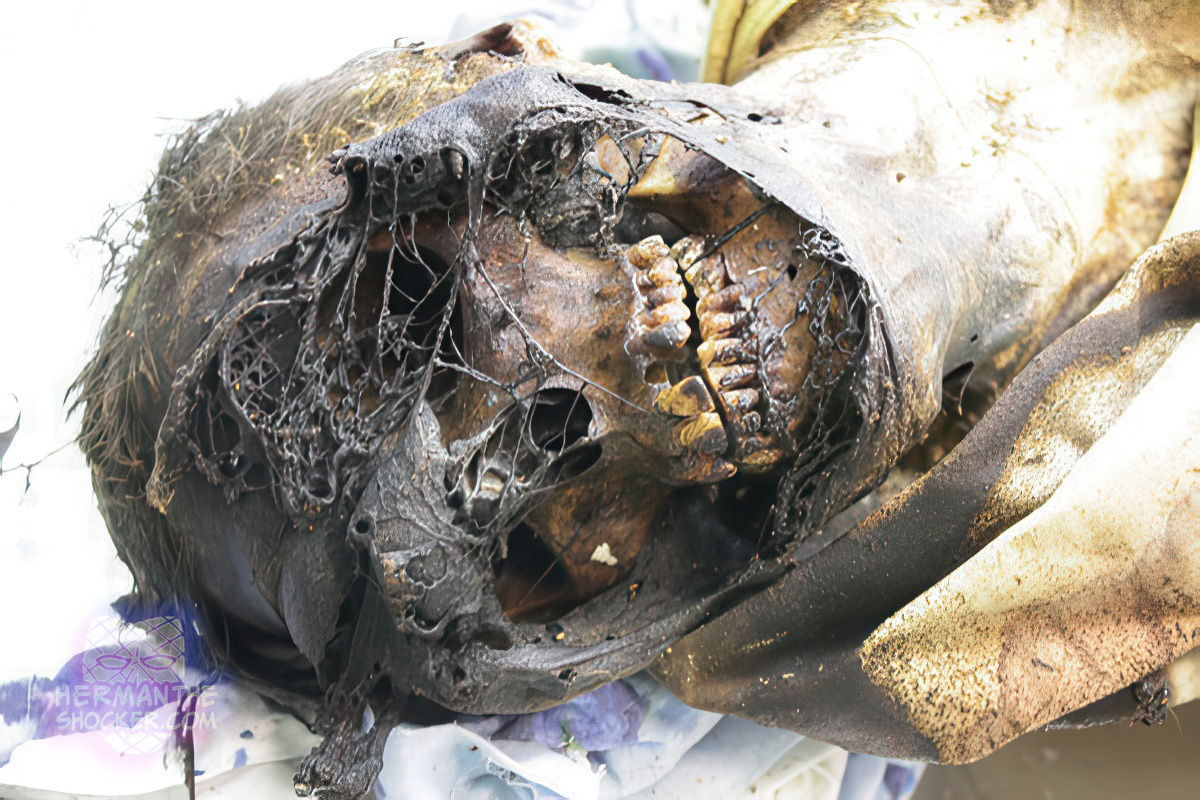A woman was found dead in her apartment in January 2009. She had not been seen for 40 days. She was lying on a mattress on the floor. The window in the room was closed and the shutters were down. All other windows and shutters in the rest of the flat were closed, apart from a tiny window in the bathroom. Next to her several pills were found. She was clothed in a T-shirt, thin capri-pants, and woolen socks. Most of the body was mummified, and the face was partially skeletonized.
Empty pupal cases of Lucilia sericata were found adhering to the woolen socks. A live specimen of the beetle Necrobia rufipes was crawling out of the clothes during autopsy. Dead adult specimens were collected, as well as empty pupal cases of Megaselia scalaris. When the abdominal cavity was opened, thousands of larvae and pupae of Megaselia scalaris were revealed.
The temperature in the room when the corpse was found was 21°C. It was assumed that the temperature remained almost constant, as the windows were closed and the shutters were down. The first developmental cycle of the blowfly Lucilia sericata had been completed when the body was found. Therefore, the calculation was based on another species, Megaselia scalaris, which is additionally known for being associated with indoor bodies. Lucilia sericata takes 19 days to complete its lifecycle. Megaselia scalaris completes development at a 12:12 photoperiod after about 37 days.
Since the individual’s missing period was about 40 days, postmortem interval determination using developmental data of Megaselia scalaris was much more accurate than the postmortem interval calculated with data for Lucilia sericata. The missing interval will most likely be very close to the real postmortem interval as a suicide note was found dated shortly before Christmas.
Latest posts











